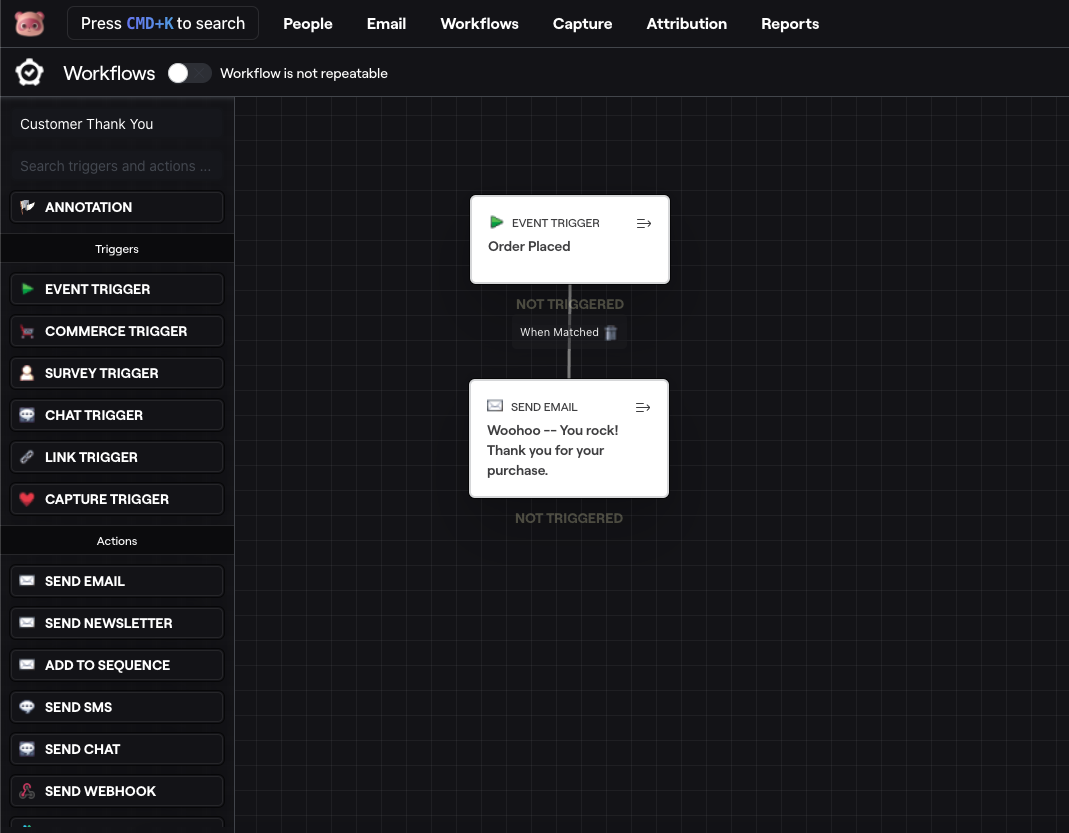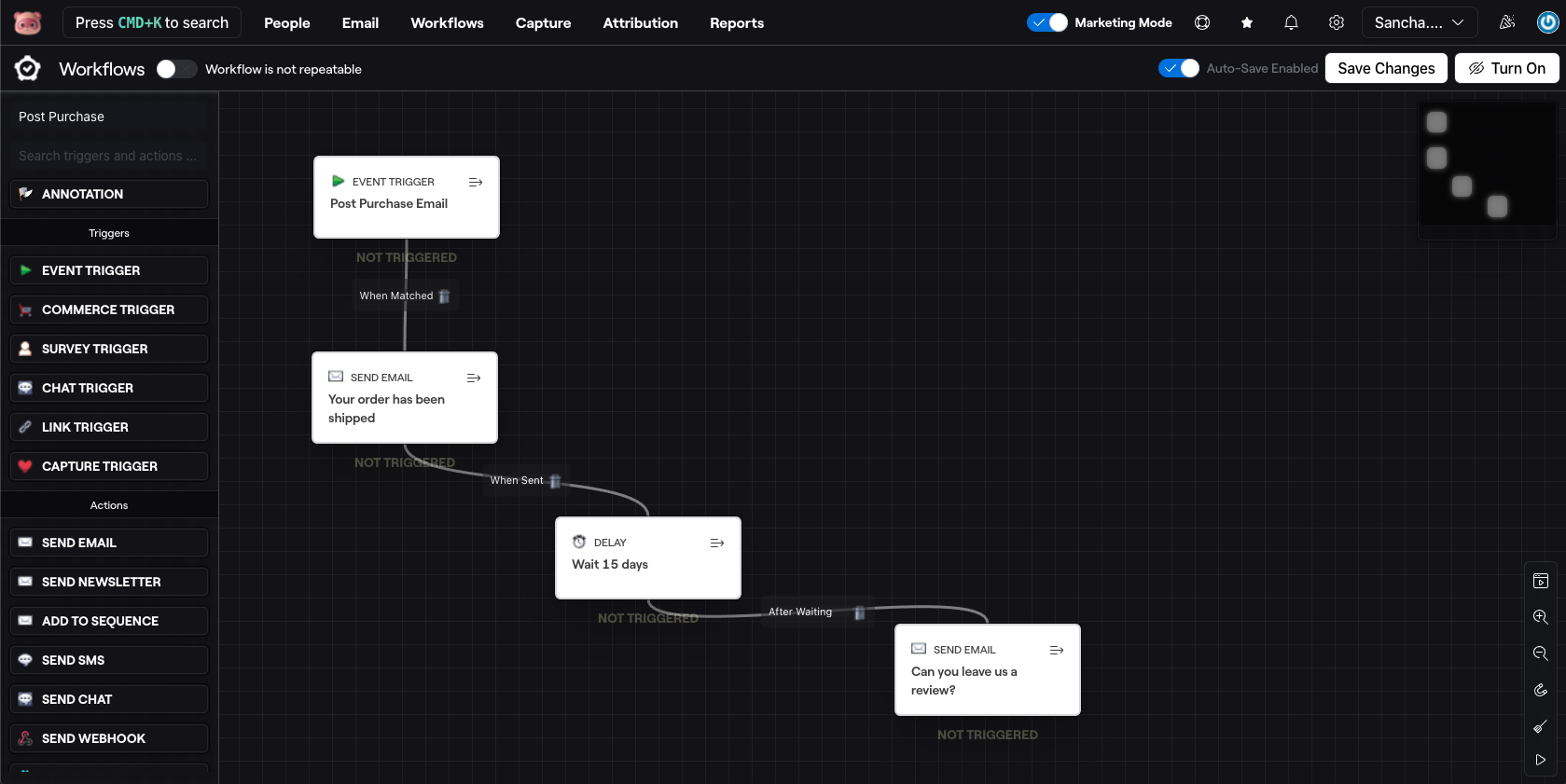Email marketing still brings a significant revenue stream to ecommerce businesses despite all the email-marketing-is-dead announcements. You have permission from customers to talk to them after all.
Still, there are some difficulties in coming up with a winning strategy since people tend to complicate everything, especially if you try to copy the process from a business that is not similar to yours.
After trying to figure out email marketing, I've noticed that you can resume your email marketing efforts into two main blocks: automation flows and campaigns.
Email campaigns are the things you decide to tell your subscribers, and usually, they are more effective when you have a big email list.
Automation flows are the messages triggered by actions people take while interacting with your business.
While other metrics like open rate, click rate, and conversion rate are important indicators of how you are doing, revenue is the most critical metric. One-off manual emails – Campaigns – and automated flows play a crucial part in your revenue when you do them right.
We will talk more about those two in this post.
Ecommerce Email Marketing Strategy – Campaigns
Email campaigns are what you think your customers will want to read. Besides that, they are great for keeping mental availability – subscribers may not be ready to do business with you at that moment, but you will be on their minds when the time comes.
So what should be the content of your email campaigns? Well, It all depends on you, and you will have to play with content and see what will bring you more results as you do it. But here are a few ideas:
- New products that arrived in your store;
- Holidays promotions (Blackfriday, mother's day, etc.);
- Special discounts on a product;
- Valuable content that can help your customer use your product better (blog post, podcast, youtube video);
- UGC – user-generated content – these are great because you will benefit from social proof, and other customers will see real people that bought and used your products.
Another thing that a campaign will rely on for success is the size of the email list. One of the most common ways to grow your list in ecommerce is by using an exit-intent pop-up, but if you are like me and think that pop-ups are annoying – and they are – you can find a few ideas in another article I wrote a few months ago.
But to grow your list faster, you will need to drive traffic to your website by using organic posts on social media or the most common method – paid ads. I can talk about this subject in another post, but I don't want to digress now.
The frequency of your email campaigns can vary from once or twice a week, but that will be your prerogative to find the middle point between the revenue generated and people unsubscribing.
Ecommerce Email Marketing Strategy – Automation Flow
Automation will give your email marketing superpowers since you will set triggers for specific events, and when your customers take some actions on your store, they will receive an email from you.
Bento makes this task so easy that it is a crime not to take advantage of it.
The possibilities for automation flow are limitless. The paradox of choice, but not worried. Bento has a few workflows set for your convenience…[Starter]. I will explain them below.

Welcome Series – this flow will trigger when someone subscribes to your email list. Introduce them to your brand, and tell them the story behind it – make them feel part of your community. You can offer a discount as a welcome gift as well.
Abandoned Cart – this will send an email after the customer abandons the checkout process. In your email, you can remind them about how great your products are, use other customers’ reviews as social proof, and reassure them that product exchanges or refunds are easy and free of charge, and if you have free shipping in place, remind them of that too.
Customer Thank You – The ecommerce platform you use may send an automatic order confirmation. Still, you can use this opportunity to send a thank you letter from the founder to the customer to create more rapport with your brand.

Post-Purchase (two parts):
Part 1: When the order is shipped, give your customers tips on how to use the product, tell them a bit about how your business works, who is taking care of their order, when they can expect it, answer anticipated questions (FAQ), and do a cross-sell.
Part 2: Ask for a product review two or three weeks after the product shipment;

Re-Purchase – At least one month after the last purchase, offer them the opportunity to acquire the same product again – if applicable (example: deodorant) – or run a cross-sell (a pair of pillows for the new bed).

As I said, the possibilities are endless. Of course, you can combine the options Bento gives you to create complex and sophisticated flows, but that will depend greatly on your needs. But for now, these automations will work just fine for your ecommerce email marketing strategy.
With nothing left to say for now, I will bid you farewell and hope that you can now put an ecommerce email marketing strategy in place for your business and have great results, increasing your revenue with your strategy.
Enjoyed this article?
Get more email marketing tips delivered to your inbox. Join 4,000+ marketers.
No spam, unsubscribe anytime.